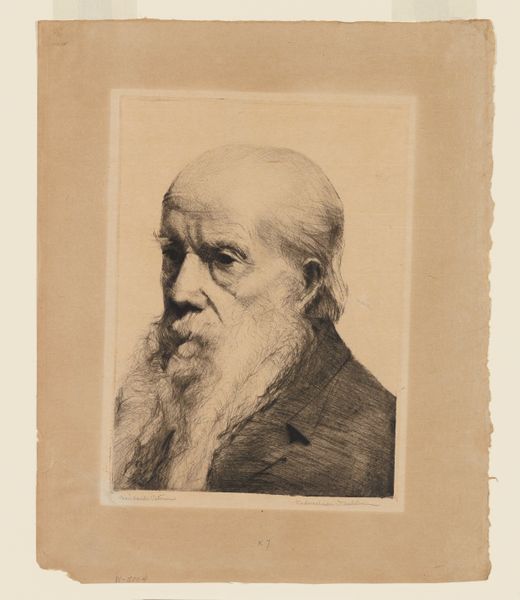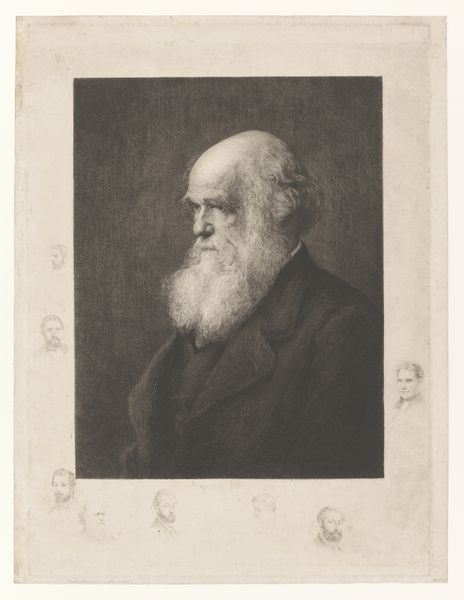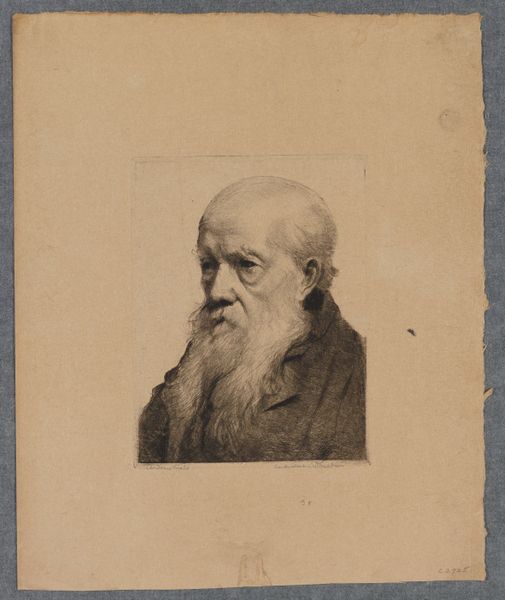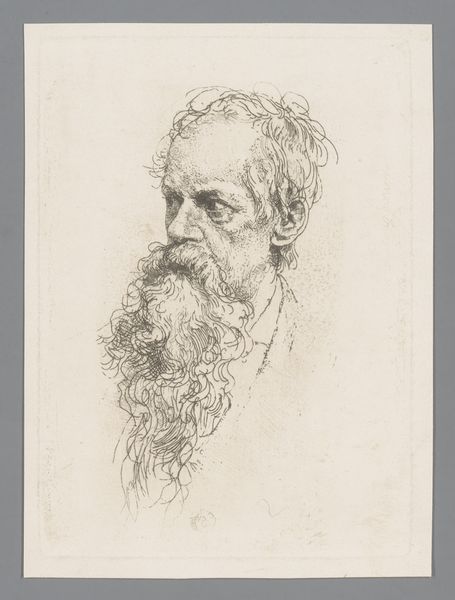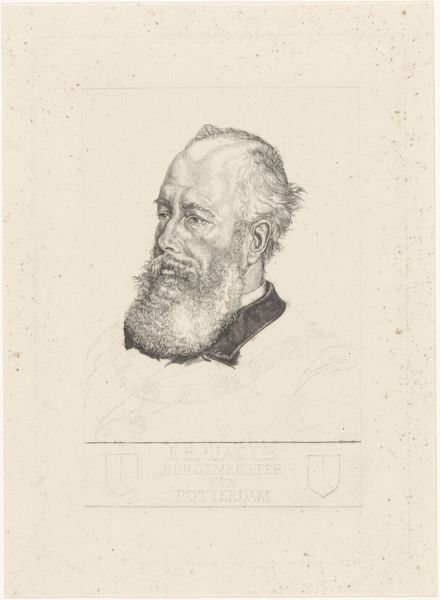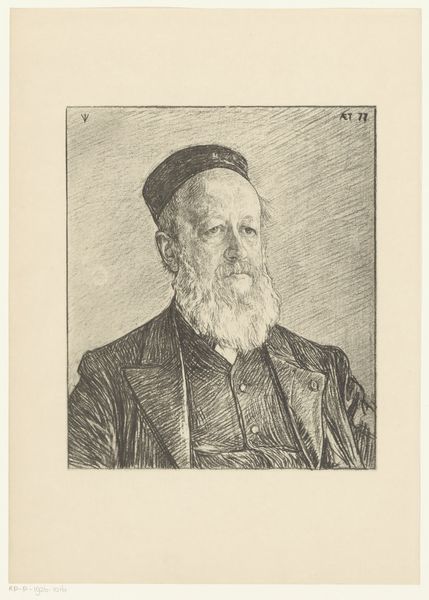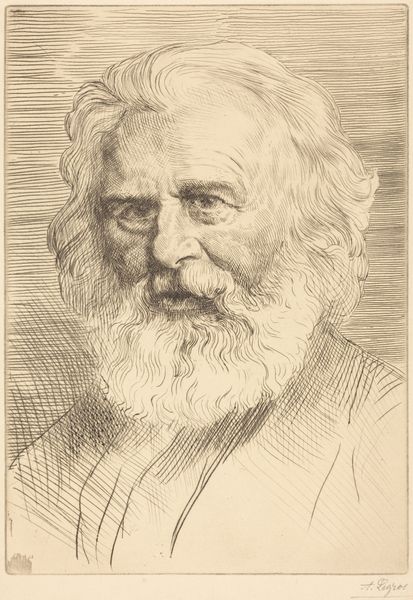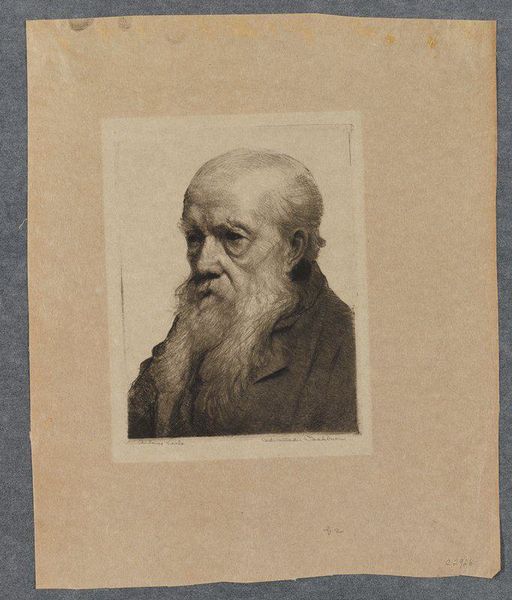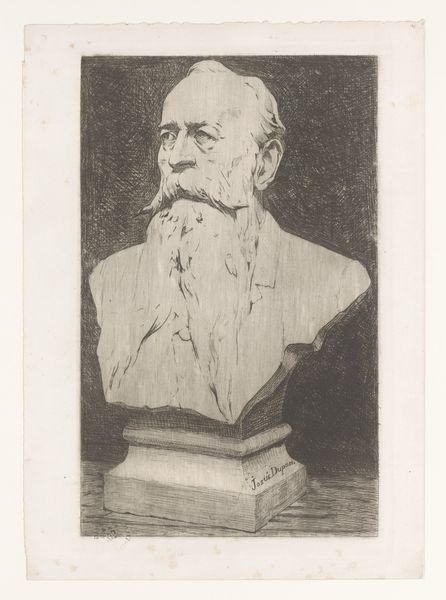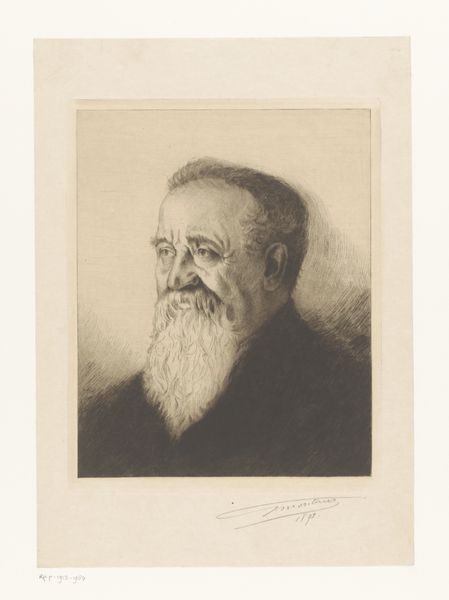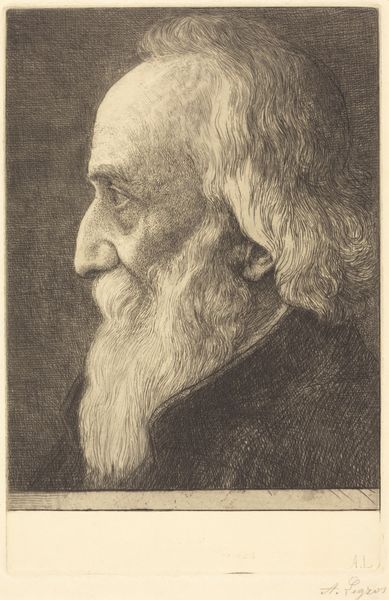
drawing, print, etching, engraving
#
portrait
#
drawing
# print
#
etching
#
men
#
history-painting
#
engraving
Dimensions: Plate: 14 3/8 × 11 7/16 in. (36.5 × 29 cm) Sheet: 19 13/16 × 13 11/16 in. (50.3 × 34.7 cm)
Copyright: Public Domain
Editor: This is an etching, and maybe also an engraving, from 1884. It’s of James Clarke Hook, R.A. by Otto Theodore Leyde. The level of detail is stunning, but something about the way the image is framed makes it feel...incomplete? What are your thoughts on this work? Curator: I see an artwork steeped in the visual and political language of Victorian England. Consider the subject: James Clarke Hook, a Royal Academician, essentially part of the artistic establishment. The print itself is significant. Why produce a portrait as a relatively accessible print, instead of, say, a unique oil painting? Editor: To broaden its audience? To make the artist more relatable, or to promote his work? Curator: Exactly. Prints like these circulated widely, reinforcing certain images and narratives. Notice the style; the etching is fairly conventional, resembling academic portraiture in painting. It conveys status, intellect, respectability...virtues prized by the Victorian middle class. How does that framing that you observed contribute to this? Editor: It isolates him a bit. There's a somberness in the isolation perhaps. Curator: Yes, isolating and monumentalizing. This connects to history painting's traditional purpose – commemorating important figures and events. Now, considering that, do you view this artwork as merely an isolated portrait? Or, could it be interpreted as part of a broader cultural project, solidifying the reputations of those deemed significant? Editor: I'm starting to see how an image like this plays a role in shaping public perception. It is a statement in itself. Thank you! Curator: And I see how a portrait, regardless of scale, can still portray power dynamics and social commentary of its time. Good questions.
Comments
No comments
Be the first to comment and join the conversation on the ultimate creative platform.
